How it all began: Getting diagnosed with Ehlers-Danlos syndrome
Oh Gosh, I feel like I have told this story too many times, but you are new here, so I might as well share it again. So this is how it all began and the reason why you are here, on my Blog, today. I try to keep it short, though.
Am I dying?
“I think I am dying,” I said to my partner on this warm, sunny evening in Germany in 2010. We had just moved into our first apartment. I was a naive, athletic 24-year-old with a tendency to being a control freak and probably also a bit anxious overall. I remember my life went to shit right after eating baked pasta you make with one of these Maggi fix spice mixtures – cooking was never really my thing.
All of a sudden, the room started spinning, my vision blurred and the left side of my body went numb. I tried to get up, but my legs wouldn’t carry me. I fell back on my couch, with my partner staring at me in shock. “I think I have a stroke,” I add. How was this possible?
The day before, I underwent a painful injection treatment and a chiropractic maneuver for what my doctors called ‘tension headaches’ – You probably realize already that this wasn’t anywhere close to tension headaches; really my first misdiagnosis. Something went wrong, and I almost died.
My journey begins in 2010.
I woke up at night from the reflex of having stopped breathing. Whenever I would doze off, my breathing would stop, and my body would rip me out of my sleep with a deep inhalation. This was the scariest symptom I ever had. Over the next weeks, many other neurological symptoms joined in, such as dizziness, tingling and numbness of my legs and arms, blurred vision, motor deficits and many, many more.
I went to all kinds of specialists all over Germany to exclude ALS, MS, and other serious conditions. Every one of them thought they had the answer; none actually did. When they couldn’t find a simple explanation for my symptoms, they quickly handed me a false psychological diagnosis. Did I say one? Well, I was diagnosed up and down the mental health ICD codes.
The first diagnosis: CCI.
Over the months, I noticed that most of my symptoms related to my neck. My cervical spine was cracking, burning, and when I moved my head, I would subluxate my upper vertebrae. Something was seriously wrong with my spine. I started to research by myself, ordered an Upright MRI, and after six months of being mostly in bed, I had my first diagnosis: craniocervical instability (CCI) with severe C4-6 instability. Basically, my whole neck was a mess. Now, I thought, life would be easier. I would find a treatment, stabilize my neck, and go back to my normal life. Yeah, that’s not how things worked, unfortunately.
All treatments failed.
I started a rigorous protocol with physical therapy at least three times a week, home exercises, pilates, hydrotherapy, osteopathy, and lots of other treatments. Nothing really worked. Instead, over time, other joints became unstable as well. I developed instability of both of my sacroiliac (SI) joints, one of my lumbar discs decided to rupture and put pressure on a nerve, causing almost unbearable neuropathic pain to my left leg; my jaw, my knees, shoulders, ankles – everything just wobbled around. What started with my neck spiraled to the point of my whole body being a construction site.
After four years of trying any available conservative therapy – I even went to see a healer; don’t judge me; at some point, I was desperate enough to try every recommendation I could get – I had enough. I was close to giving up. With nobody believing my symptoms were real and mostly having exhausted my savings for useless therapies, I decided to take a huge leap of faith.
Searching for answers in the US.
I booked a plane ticket and traveled to the US in the hopes of finding answers and better treatment options. My first stop was Chicago to undergo my last try of an ‘alternative’ treatment: Prolotherapy. I had thousands of injections – no, I am not kidding – to my whole spine, with a focus on my neck, but I didn’t notice much of an improvement. My treating doctor mentioned to me that my joints were a bit too flexible and that he thought I must have an underlying condition causing my neck instability and all the other problems. He sent me to see a neurosurgeon in Maryland.
What I didn’t know back then was that the surgeon I was meant to see was one of a few experts for my conditions. So I hopped on another plane, had the most comprehensive examination, and an hour later, the doctor looked at me and said, “Karina, I am sure you have Ehlers-Danlos syndrome.” He also mentioned many other conditions, such as mast cell activation and dysautonomia. My head was spinning. Could I have finally found the answers I was looking for? I did!
It’s EDS!
I went back to Germany, had the diagnosis confirmed by a geneticist – I actually have a rare TNXB mutation – and over the following years, I collected a page full of other diagnoses, mostly related to EDS. Lucky me, I have another rare condition called factor VII deficiency, a bleeding disorder. I guess I always beat all odds… at least when it comes to the rare disease lottery.
Receiving the EDS diagnosis shed a lot of light on my childhood and teenage years. I never had severe symptoms, but there was always something. I had these strong nosebleeds that sent me into the ER every couple of weeks because nobody could stop the bleeding; I lived with constant chronic pain, which, you won’t be surprised, my doctors called ‘growing pains;’ I slept a lot, especially after physical activity, and I could dislocate my hips without any problems. It suddenly made sense.
Moving on.
With the diagnosis, I learned to accept that my life won’t go back to how it was before. I was finally able to let go of the grief and look into my future; to see my new life. At this point, I hadn’t been able to work in my job as a research associate for four years. I didn’t know what else I was good at. I decided to take some time to find out everything about EDS and my other conditions that I could. After all, research was my thing, right?
Becoming a journalist.
Then I started to write, mainly for myself. I wrote journals and personal essays about my journey to getting my diagnosis. Turns out, actually speaking out all the anger and frustration was a healing experience. With every word, I felt more relieved. I published a few of my essays until I realized if nobody knows about EDS, why don’t I change this? I had the medical knowledge and the science background, and I loved writing. So why not combine all of it? I began to write German articles and academic papers about EDS, and fast forward to 2021, I am a journalist with a MA; I produced an Ehlers-Danlos documentary, and I write for several German and US publications about all things chronic illness, disability, medicine and science. I came a long way. Literally.
I love my life (even though it had been quite a shitshow over the last months), and I am still occasionally not sure who I am and where I want to go, but for the most parts, I think I have found my place in life, and most importantly, no matter what happens, there is always one thing that keeps me going: writing. Writing isn’t only my passion or a tool to change the world; it’s also my main coping mechanism. Writing means everything to me.
And that’s why you are here today! That’s how my real journey, my new life as a chronically ill, disabled journalist, begins.

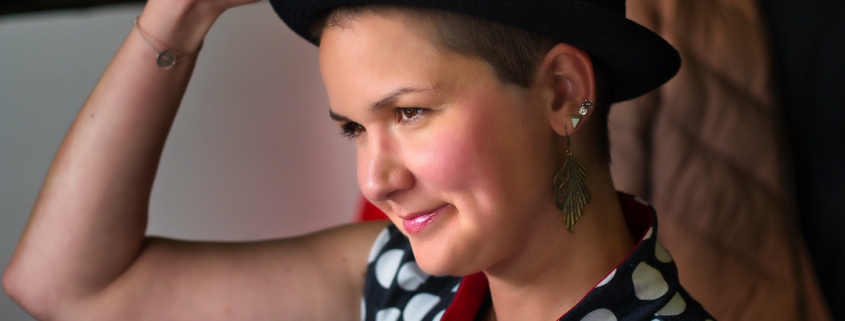

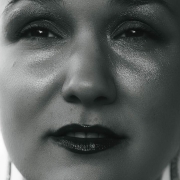
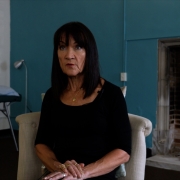
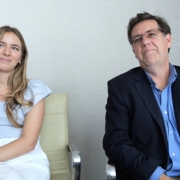
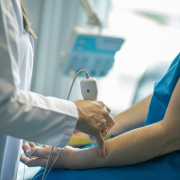
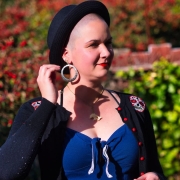


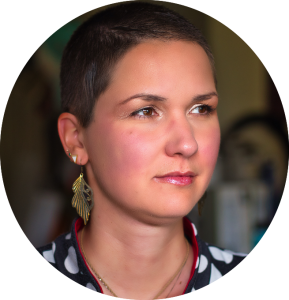


I feel like someone’s written bits and pieces of my life in your writings. Down to the TNXB issues, and still not having a good team. Thanks for sharing, I’ve not been as brave!
Hi Stephanie, thanks so much for your kind words. If you ever fell like connecting, please reach out to me and we can talk more about TNXB and whatever other issues. Maybe I can also help with finding a good team of doctors.
Hugs,
Karina
I am in the middle of having genetic testing done. I have Congenital Adrenal Hyperplasia and there is a link with CAH and EDS through the TNXB gene. I am being checked for several forms of EDS including TNXB. Just waiting on my results. I’m very hypermobile…numerous surgeries, stress fractures in both feet this past year…terrible scarring, bruising, and skin that doesn’t heal well. Really excited to fond out what form of EDS I have…and sorry it will cost me $1,600 to find out. Genetic testing should be free in the US.
Hi Susan, actually CAH-X (the connection between CAH and EDS) is pretty well studied. There are some good publications about that. Funnily, I was in a clinical trial at the NIH for exactly that. If you could get into a trial, testing would potentially be free of costs. And yes, I agree, testing should be free either way, especially since those results are so important for any management after.
Best,
Karina
Hi, love your newsletter although I’ve only been reading it for 5 min! I also have EDS, hypermobility, Adrenal insufficiency, Asthma, & a host of EDS related diagnoses. I’m trying to figure out, why did you cut your hair! ☺ looks great, but I just know there’s a story in here somewhere! Love, julie
Hi Juliea, thanks for checking out my blog and for reading the newsletter. That’s a very good question. I was always intrigued by women that shaved their head and was curious if that kind of haircut would look good on me. With COVID and the fact that I would be in isolation for at least a year without access to my hair stylist, I thought it’s the best time to try this out. I have always experimented with my hair (mainly with bright colors) when I was younger and I loved women who had their own style and didn’t follow conventional ideas of ‘fashion’. So when COVID arrived, I decided to just give it a try, and I can tell you, it was the most freeing thing I have ever done. And then I just came to enjoy the fact that showering is so much easier, blow drying doesn’t exist anymore and painful brushing neither. It’s a very convenient hairstyle that I decided to keep for a while. It saves me time and energy every morning and I like how it looks. :) That’s the story. Was that what you expected? :)